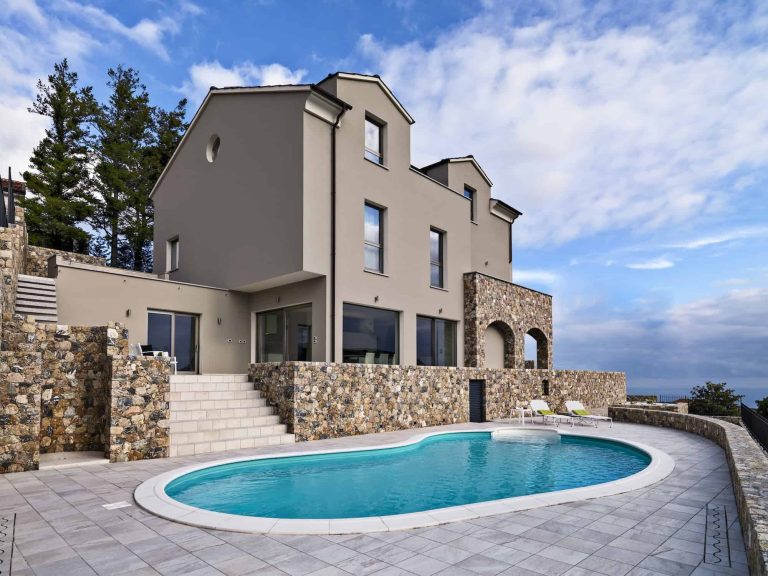Renovating a house with resale in mind transforms ordinary upgrades into strategic investments. Whether you’re preparing to list next season or improving long-term equity, choosing the best home improvements ensures you get the most value for your budget. This guide outlines high-impact projects, planning tips, and a prioritized checklist to help you convert home renovation work into a profitable sale.
Best Home Improvements Methods
Start with Local Market Research
Before any work begins, study recent comparable sales and buyer preferences in your neighborhood. Understanding what local buyers prioritize prevents over-improvement and helps you select the best home improvements for your area. A renovation that’s popular in one suburb might underperform in another; align upgrades with local standards.
Boost Curb Appeal First
First impressions matter. The easiest exterior modifications, including new paint, a new front door, a green lawn, and a neat walkway, are always among the most effective home renovations. These are relatively inexpensive changes that increase perceived value and enhance listing photographs that drive additional showings.
Prioritize Kitchens and Bathrooms
Homes sell on the basis of kitchens and bathrooms. Refinishing the cabinets, changing countertops, updating lighting, and installing effective appliances are all targeted updates that provide great returns and are some of the best home improvements. New vanities, modern fittings, better ventilation, and quality tile are added to bathrooms where it is needed. These targeted projects tend to be much faster in terms of ROI than full-scale luxury remodels.
Invest in Essential Systems
Properly functioning systems are a comfort to buyers. Repairing or replacing a leaking roof, improving the HVAC system, updating the plumbing, and complying with electrical panel code are important components of renovation work that directly influence inspections and appraisals. These projects are not as glamorous, but they eliminate key buyer objections and guard value.
Improve Flow, Light, and Space
Open, bright interiors feel larger and more inviting. Removing a non-load-bearing wall, enlarging windows where feasible, or reconfiguring awkward layouts can be among the best home improvements because they change how buyers experience the home. Even modest improvements in sightlines and natural light increase desirability.
| Best Home Improvements | Why It Matters | Impact on Resale |
| Kitchen Upgrades | Buyers prioritize modern, functional kitchens. | High return on investment |
| Bathroom Renovations | Fresh fixtures and tiles boost appeal. | Strong selling point |
| Curb Appeal Enhancements | First impressions attract more buyers. | Faster, higher offers |
| System Improvements | Reliable roof, HVAC, and plumbing add trust. | Reduces deal-breakers |
| Outdoor Living Spaces | Decks/patios expand usable lifestyle space. | Increases market value |
Update Flooring and Finishes
Worn floors can undermine other investments. Refinishing hardwood, installing durable laminate, or choosing neutral tile in high-traffic zones refreshes your home’s base and complements other upgrades. Combine new flooring with neutral paint, cohesive trim, and consistent hardware to create a clean, modern presentation.
Add Energy Efficiency
Energy-efficient features attract cost-conscious buyers. Upgrades such as improved insulation, double-pane windows, high-efficiency HVAC units, and programmable thermostats reduce operating costs. Prominently listing these benefits in marketing materials emphasizes long-term savings and can justify a higher asking price.
Create Usable Outdoor Living
The outdoor space increases the available square footage. The construction of a functional deck, delineating a patio or other rudimentary landscape features, forms attractive outdoor rooms. All these additions are usually enumerated as among the best home additions, as they add lifestyle value without the cost of adding indoor additions.
Small Touches, Big Perception
Tiny superficial cosmetic changes have a disproportionate impact on consumer perception. New neutral paint, new light fixtures, new cabinet hardware, and professional staging will make the house look well-maintained. The process of decluttering, deep cleaning, and targeted staging also aids in helping potential buyers to envision living in the space, and this process can accelerate offers.
Match Neighborhood Expectations
Avoid over-improving. An expensive finish in a small space seldom has a payoff. Rather, seek long-term, elegant improvements in line with similar dwellings. When properly completed, such best home improvements make resale and attractiveness a lot more likely.
Choosing the Best Home Renovations for Resale
Not every upgrade works best when you are trying to sell. The best renovation decisions focus on the daily utility and general attractiveness: new kitchens and bathrooms, efficient systems, and unconventional and clean modern finishes. When specifically concerned with the best home renovations to increase the sales price, you should choose work that will cut buyer resistance and expand usable space over hyper-personalized luxury installations. Such renovations usually strike a balance between cost and marketability and can be more readily imagined by buyers.
Work with Trusted Professionals
Risk is minimized with proper quotes, permits, and qualified contractors. Hire licensed professionals to do any major structural or mechanical work, and check insurance and references. With proper permits and workmanship, the delays and other inspection issues that may pull a sale can be avoided.
Budgeting for Maximum Return
Set a realistic budget before work begins. Divide funds into must-fix systems (roof, HVAC, plumbing), high-return cosmetic upgrades (kitchen refresh, bathrooms, flooring), and staging/marketing. Keep a contingency reserve of 10–15% for unexpected costs discovered during renovation. Tracking expenses and expected return on investment helps you prioritize and prevent overspending.
Permits, Inspections, and Quality Control
Don’t skip permits for structural changes or major mechanical upgrades. Proper permits and passing inspections protect the sale process and prevent renegotiations. Implementing quality control—regular walkthroughs with contractors, interim inspections, and independent checks—reduces the chance of rework and helps keep timelines on track.
Measuring Success: Simple ROI Metrics
Use post-renovation measures to understand the success of the renovation through comparison of the sale price with the total cost invested and the average in the local market. Basic ROI helps in putting perspective: when your 30,000 kitchen refresh helps you get a higher sale price of 40,000, your net gain will be positive. Be realistic, and focus on gradual changes that align with buyer demand. Investing in professional renovation and restoration services can further enhance the value of your property and ensure the upgrades meet current market expectations.
Accessibility and Maintenance Upgrades
Minor accessibility improvements—handrails that are safer, more light, lever handles, etc.—can be made attractive to wider audiences. In addition, accomplished deferred maintenance, such as new caulking, gutter cleaning, and service records, indicates a well-maintained property. These are realistic; the best home improvements are the improvements that alleviate concerns of buyers.
When to Use Renovation Specialists
In the case of older or old houses, contact people who specialize in restoration. Repairing delicate jobs by certified teams helps to save character and avoid expensive errors. In more complex property renovation projects, restoration workers make sure that the work does not interfere with the integrity of the building or with local codes.
A Practical Prioritization Checklist
- Curb appeal: front door, paint, landscaping.
- Kitchen: counters, cabinets, lighting, appliances.
- Bathroom: fixtures, ventilation, tile.
- Systems: roof, HVAC, plumbing, electrical.
- Flow and light: remove non-structural barriers, add windows.
- Flooding: refinish or replace with durable options.
- Energy: insulation, windows, thermostats.
- Outdoor living: deck or patio, tidy landscape.
- Cosmetic: paint, hardware, staging.
- Professional oversight: permits and licensed contractors.
Final Thoughts
Choosing the best home improvements requires balancing cost, local demand, and durability. Projects that improve kitchens, bathrooms, and essential systems usually deliver the most consistent returns. If you are in the buying selling house market, smart upgrades with solid documentation maximize price. Choosing the right mix of upgrades starts with a clear plan—document every improvement and consult local experts to turn renovations into resale success. Ready to turn your distressed property into a win-win deal? At Pennington Real Estate Investments, we specialize in smart property renovation and resale strategies that maximize value. Call us today at 661-201-4978 or Email Rpre.invest@gmail.com.
Frequently Asked Questions
Highest ROI?
Kitchens, bathrooms, major systems (roof/HVAC/plumbing), and curb appeal.
Budget rule of thumb?
Fix systems first, then cosmetics; keep 10–15% contingency.
Permits required?
Yes—for structural, electrical, plumbing, and major mechanical work.
What to avoid?
Over-improving beyond neighborhood standards or highly personal finishes.
Quick staging wins?
Declutter, deep-clean, neutral paint, and pro photos.




